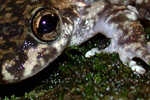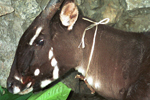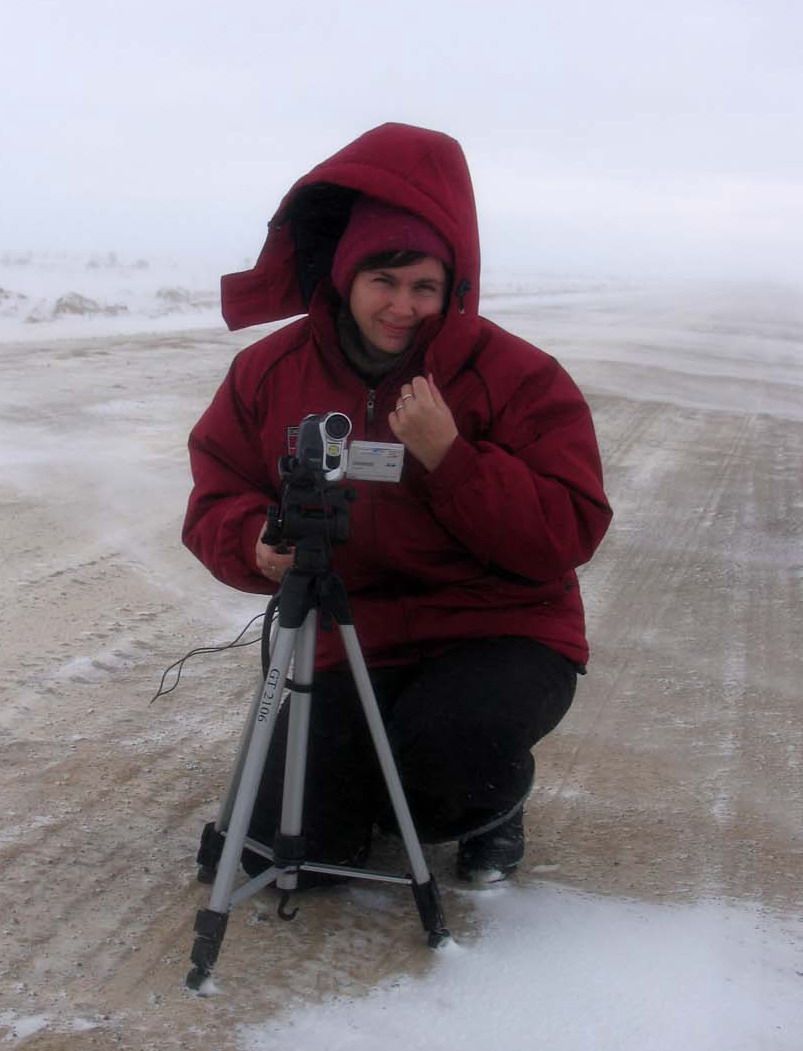The reemergence of the endangered Huemul deer (Hippocamelus bisulcus) marks a momentous achievement by local governments and conservationists worldwide. From the brink of extinction—with populations decimated to one percent of what they previously were—the Huemul populations have not only stabilized but are steadily increasing, according to a new study in Oryx.
A naturally docile and peaceful animal, the Huemul made for easy prey to European colonists and poachers. Coupled with the mass production of cattle in their ecosystem, this endemic animal’s populations plummeted so severely the species was nearly lost forever. In the 1990s scientists estimated the deer’s population had fallen by 99 percent while its range had been cut in half. The most recent estimate of global population put the deer’s numbers at 2,500.
This severe decline prompted the Chilean government, as well as conservationists worldwide, to act quickly in order to save one of their most nationally known species. Field stations were set up across Bernardo O’Higgins National Park Patagonian region, giving park rangers a base of operations as well as provided scientists a more convenient way to monitor the Huemul populations.
“Our results suggest that synergistic conservation actions, such as cattle removal and poaching control, brought about by increased infrastructure, can lead to the recovery of species such as the threatened Huemul,” co-author Cristóbal Briceño, a researcher with Cambridge’s Department of Archaeology and Anthropology, said.
The results of these enforcement efforts were almost instantaneous, leading to a full on renewal of the Patagonian environment. The Huemul were able to descend from the mountain environments of the region, where they had sought refuge, back to their verdant grasslands. In these study areas, at least, counts of the Huemul population showed that the species was re-bounding to pre-cattle days.
 The endangered Huemul deer, a Chilean icon, is returning to former habitat thanks to collaborative conservation efforts. Photo by: Alejandro Vila. |
Bernardo O’Higgins National Park is Chile’s larges protected area and one of the most biodiverse places in all the world, encompassing fjords, mountains, glaciers, islands, grasslands, and forests, each with their own unique ecoregion. Many of these ecoregions are the homes to plant and animal species that exist nowhere else in the world, such as its own species of skunk, fox, and even cougar. The region is also home to a massive diversity of marine life ranging from sea anemone to sea lions.
The geography and location of this region are primarily responsible for the high biodiversity that is found there, most notably the Andes and the Fuegan mountain ranges. When water evaporates in this region wind pushes this warm moist air towards the Andes and Fuegan mountains where it then cools, condenses, and precipitates, providing all the water required producing temperate rainforests. Meanwhile colder water currents coming up from the Antarctic keep the coast cool and wet.
The Magellanic subpolar forests are one of the resulting ecosystems. Back in the Ice Age the entire region was practically covered in glaciers leading to presence of a multitude of islands, straits, and fjords in the present day region. In the western reaches of the forest the oceanic current leads to high levels of wind and rain, coupled with the loose rocky soil and low-growing flora. The region is an elaborate mosaic of peat, mosses, shrubs, and grasses. Farther inland from the coast, evergreen rainforests can be found spanning a vast portion of the park; this region is a sea of verdant green trees with mountains framed in the background.
CITATION: Cristóbal Briceño, Leslie A. Knapp, Alejandra Silva, José Paredes, Iván Avendaño, Aliro Vargas, Juan Sotomayor and Alejandro R. Vila. Detecting an increase in an Endangered huemul Hippocamelus bisulcus population following removal of cattle and cessation of poaching in coastal Patagonia, Chile. Oryx. Volume 47, Issue 02, April 2013, pp 273-279.
Related articles
The comeback kids: the role of zoos in saving species from oblivion (photos)
.150.jpg)
(06/03/2013) While many people may view zoos first and foremost as attractions, these institutions have a long history of supporting and instigating conservation work, including saving species from extinction that have vanished from their wild habitat. But such efforts require not just dedication and patience, but herculean organizational efforts. Enter, the World Association of Zoos and Aquariums (WAZA), which works with zoos and aquariums to set up conservation programs and track endangered species in captivity.
Snowy tigers and giant owls: conservation against the odds in Russia’s Far East
-WCS-Russia.150.jpg)
(05/28/2013) The Russian Far East is one of the wildest places on Earth: where giant tigers roam snow-covered forests and the world’s biggest owls stalk frozen rivers. Bordering northern China and North Korea, the forests of Primorye are known for the diversity of habitats, including coastal forests along the Sea of Japan, vast coniferous forests in the Sikhote-Alin mountains, and even steppe. These diverse ecosystems also makes the forests a hotspot for endangered species, including Amur tigers (Panthera tigris altaica), Blakiston’s fish owls (Bubo blakistoni), and one of the world’s rarest big cats, Amur leopards (Panthera pardus orientalis), which number only 30-50 animals.
Turning up the temperature might save frogs’ lives

(05/28/2013) Over the past 30 years, amphibians worldwide have been infected with a lethal skin disease known as the amphibian chytrid fungus (Batrachochytrium dendrobatidis). “The disease can cause rapid mortality, with infected frogs of susceptible species dying within weeks of infection in the laboratory.” Jodi Rowley, a herpetologist with the Australian Museum told mongabay.com. “This disease has now been associated with declines and extinctions in hundreds of species of amphibians worldwide, and is a serious threat to global amphibian biodiversity.”
Rhinos moved from South Africa to Botswana for safekeeping
(05/23/2013) A private safari company has moved six white rhinos (Ceratotherium simum) from their home in South Africa to Botswana in a bid to save them from an out-of-control poaching crisis in their native land. Currently, around two rhinos are killed everyday in South Africa for their horns, which are then smuggled to East Asia.
The saola: rushing to save the most ‘spectacular zoological discovery’ of the 20th Century

(04/04/2011) The saola (Pseudoryx nghetinhensis) may be the most enigmatic, beautiful, and endangered big mammal in the world—that no one has ever heard of. The shy ungulate looks like an African antelope—perhaps inhabiting the wide deserts of the Sahara—but instead it lives in the dense jungles of Vietnam and Laos, and is more related to wild cattle than Africa’s antelopes. The saola is so unusual that is has been given its own genus: Pseudoryx, due to its superficial similarities to Africa’s oryx. In the company of humans this quiet forest dweller acts calm and tame, but has yet to survive captivity long. Yet strangest of all, the 200 pound (90 kilogram) animal remained wholly unknown to science until 1992.
12,000 Critically Endangered antelopes found dead
(06/10/2010) The Ural population of the Critically Endangered saiga, a curious-looking Asian antelope, has been decimated by an unknown assailant. 12,000 saigas, mostly females and their calves, were found dead in western Kazakhstan reports the Saiga Conservation Alliance.
After declining 95% in 15 years, Saiga antelope begins to rebound with help from conservationists

(09/20/2009) In a decline on par with that suffered by the American bison in the Nineteenth Century, in the 1990s the saiga antelope of the Central Asian steppe plummeted from over one million individuals to 50,000, dropping a staggering 95 percent in a decade and a half. Since then new legislation and conservation measure have helped the species stabilize in some areas but in others the decline continues. Working for six years with the Saiga Conservation Alliance, Founding Member and Executive Secretary Elena Bykova has helped bring the species back from the very brink of extinction.
Last chance to save a ‘singular beauty’ of Asia: the shy soala

(09/03/2009) Only discovered in 1992, the reclusive and beautiful saola Pseudoryx nghetinhensis may soon vanish from the Earth, if rapid action isn’t taken to save one of Asia’s most enigmatic and rare mammals. Listed as Critically Endangered, the species has experienced a sharp decline since its discovery due largely to poaching. “The animal’s prominent white facial markings and long tapering horns lend it a singular beauty, and its reclusive habits in the wet forests of the Annamites an air of mystery,” says Barney Long, of the IUCN Asian Wild Cattle Specialist Group.
Saving Africa’s ‘unicorn’, the okapi

(09/02/2009) The giraffe is one of Africa’s most recognizable animals, but its shy and elusive forest cousin, the okapi, was so little known that until just over a century ago the western world believed it was a mythical beast, an African unicorn. Today, a shroud of mystery still envelops the okapi, an animal that looks like a cross between a zebra, a donkey, and a giraffe. But what is known is cause for concern. Its habitat, long protected by its remoteness, was the site of horrific civil strife, with disease, famine, and conflict claiming untold numbers of Congolese over the past decade. Now, as a semblance of peace has settled over Democratic Republic of Congo (DRC), the okapi’s prospects have further dimmed, for its home is increasingly seen as a rich source of timber, minerals, and meat to help the war-torn country rebuild. In an effort to ensure that the okapi does not become a victim of economic recovery, the Okapi Conservation Project (OCP) is working to protect the okapi and its habitat. Founded by John Lukas in 1987, well before the conflict, OCP today manages the Okapi Wildlife Reserve, a 13,700-square-kilometer tract of wilderness in the Ituri Forest of northeastern DRC.
Caribou and reindeer population plunges 60 percent in three decades

(06/14/2009) The first ever comprehensive survey of caribou worldwide (known as reindeer in Europe) has found that the species has suffered a staggering decline. Researchers from the University of Alberta discovered that the caribou population has fallen 60 percent in half as many years. The study published in Global Change Biology points to global warming and industrial development as the reasons behind the decline.